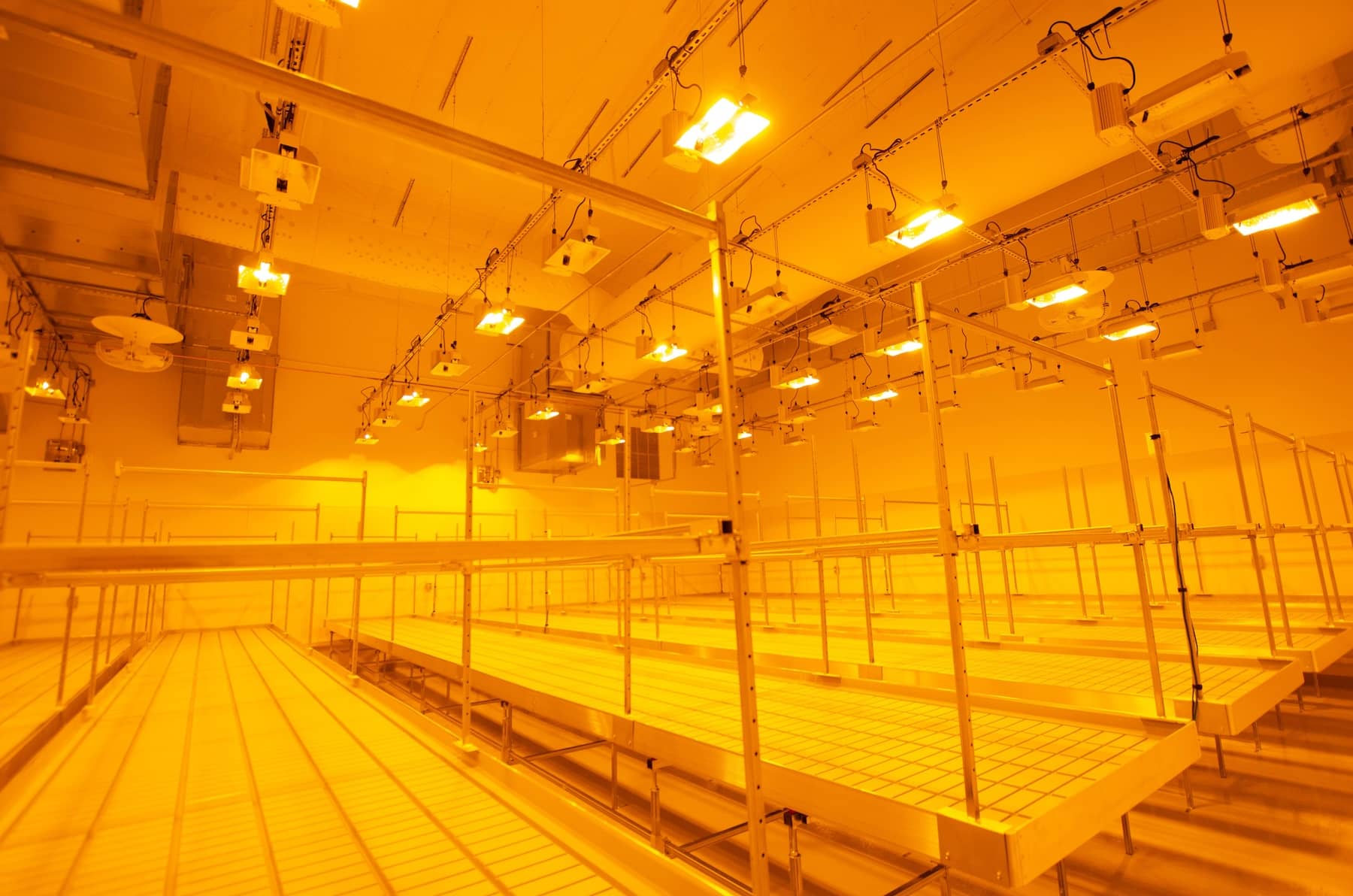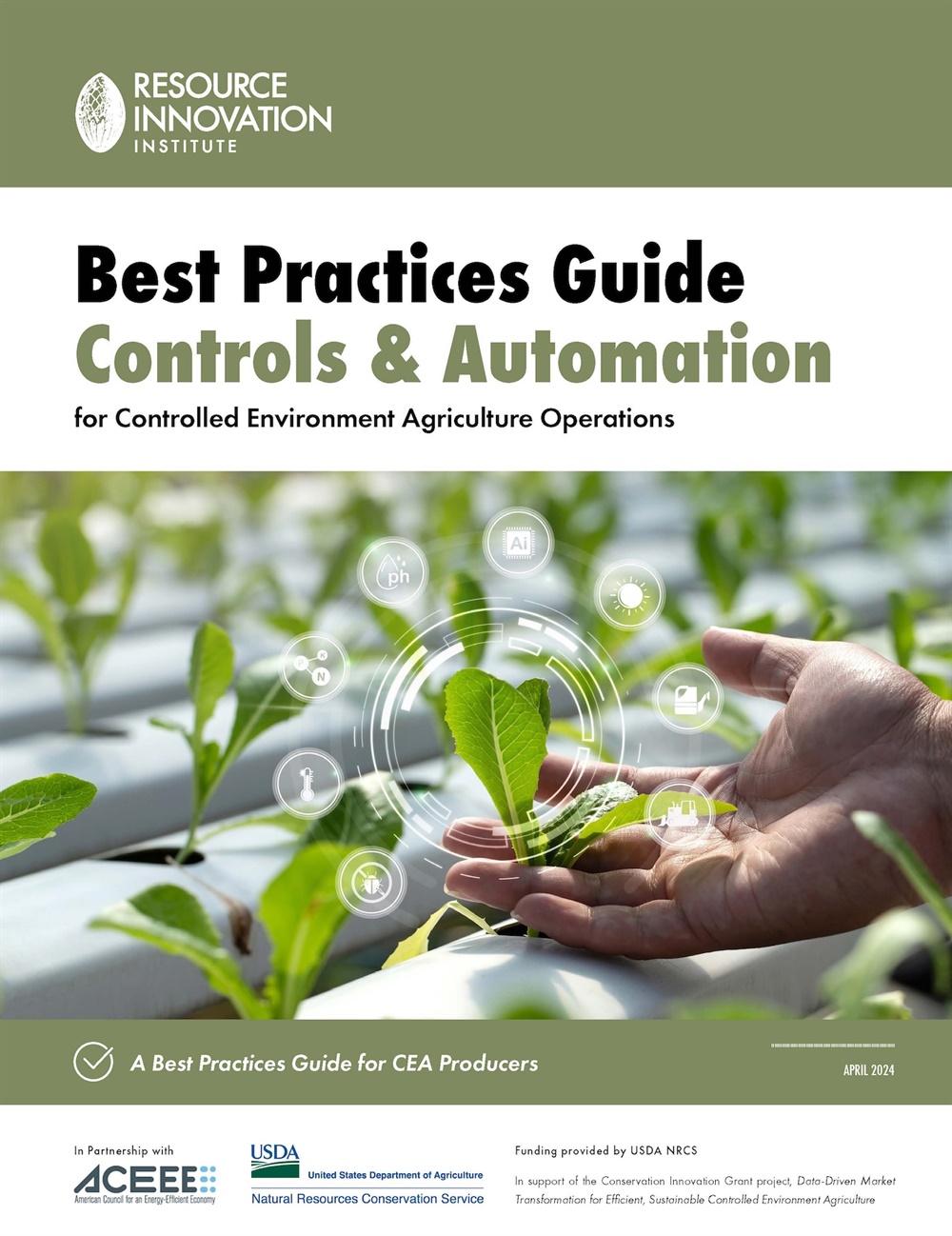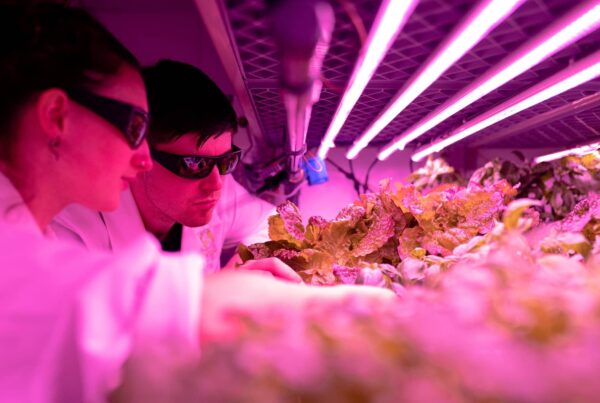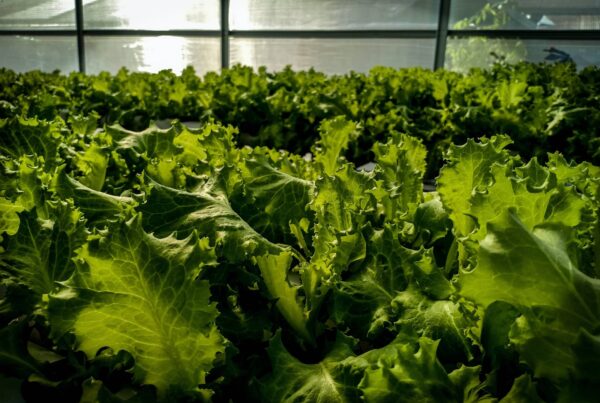In 2017, utilities and energy experts noticed a spike in electric demand. After 20 or so years of stable low growth, it was first posited that the increase in electric vehicles on U.S. roads and building electrification (e.g. swapping out fossil fuel-burning furnaces for electric heat pumps) was driving this boom.
As Wesley Whited, a Principal Consultant at DNV Energy Services, an RII member organization, looked closer into utility data, “What we started to see was that in states that have legalized recreational marijuana, that CEA was three, four, five times the load growth on the grid than the EVs,” he tells RII.
Cannabis farms are some of the most energy-intensive CEA facilities due to the plant’s ability to absorb light and other inputs productively, and the growing number of indoor farms cultivating produce is only adding to that grid load. This is an important reality for the CEA industry to understand as the grid infrastructure evolves and moves away from fossil fuels towards renewable energy sources, Whited notes. “We’re doing this to decarbonize our society. And to decarbonize our society, we need to clean the grid up, and then we need to move everything over to the electric grid.”
Through smarter controls and automation tools, CEA facilities can curb energy usage, easing the utility providers’ growing pains without sacrificing crop quality or yield. Doing so not only helps stabilize grids, especially during peak demand periods but also streamlines operations and reduces production costs, increasing profitability.
Today’s tech
One of the main technologies that can help CEA operators reduce their energy usage is automated controllers. These systems allow facilities to optimize energy efficiency by precisely regulating environmental conditions like temperature, humidity, and lighting.
Chris Lemay, Head of Product at Argus Controls, an RII member organization, explains that controllers can be viewed as belonging to three tiers. “The specific equipment’s microcontroller with finite settings; the facility’s controller coordinating between those different systems; and in some cases there might be a third layer that’s optimizing based on your overall business goals,” he says.
Lighting, HVAC, and fertigation system controllers sit on that first tier–and these can be optimized for energy usage efficiency by simply programming them to start in stages. This will help manage peak loads by reducing the amount of energy a facility pulls from the grid. Because most buildings are billed on their peak load in 15-minute increments, this staging strategy will also help reduce utility costs.
When staging systems, it’s important to avoid creating a snapback load, Whited says. “Snapback load is when you depress the load, but then it all comes back online at the same time. What you can end up doing is you stop one peak from happening but you accidentally create a new peak on the rebound.”
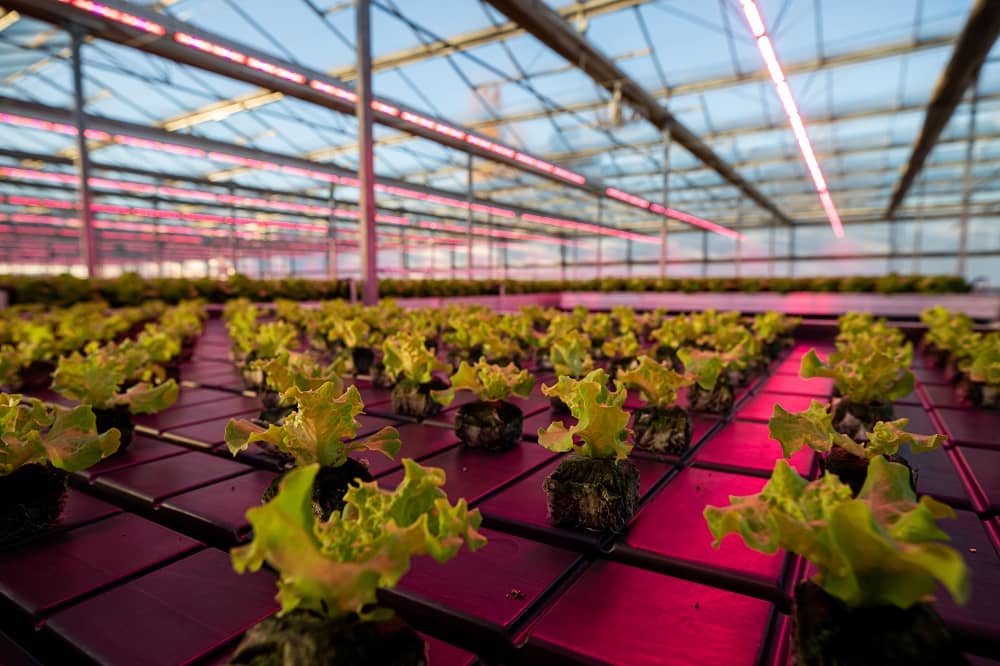
photo: Signify
For example, a CEA facility may decide to turn off or dim the lights during peak energy pricing hours to reduce electricity costs.Once the peak pricing period ends, the facility switches all the lights back on simultaneously to ensure plants receive adequate light for the remaining growth period. This sudden surge can stress the electrical grid and lead to higher demand charges. A second controller layer can help coordinate systems and prevent this from happening.
When relying solely on individual system controls, growers can “end up wasting a bunch of energy,” explains Argus Controls Senior Technical Lead Jeff Neff, due to poor coordination between separate systems. “When the dehumidifier comes on, it starts to add some heat, and then the chiller comes on. Both systems can lower relative humidity, but if they are working separately, then they are likely to overshoot the mark and waste energy overall.”
An integrated controller coordinates and times these systems to account for what is needed now, but also an hour from now when lights are off or before lights turn on in the morning to “create that gentle ramp for the equipment and the plants,” Lemay explains.
Upgrading to these types of advanced controllers is generally straightforward. “Some infrastructures are already laid out in terms of the interfacing between the equipment and the brains,” says Eric Schmidt, Global Sales Support Manager for Argus Controls. “Upgrades tend to be easy in that sense and don’t require replacing all your infrastructure at once.”
The third tier of controllers can take this a step further by leveraging artificial intelligence and advanced algorithms to optimize for energy costs and carbon footprints.
The next step in advanced controllers
Many Dutch growers have been coordinating with their utility provider to determine their electricity usage through next-day pricing, referred to as real-time pricing in the U.S. At some point during the day, the growers will receive a notification about the next day’s utility rate. Growers will consider that price and ramp up or dial back their energy usage to maximize profitability. Sometimes, the grid produces too much energy and growers can be paid to turn on lighting fixtures even when already hitting target daily light integral levels.
While the U.S. grid isn’t quite able to do this yet (at least at scale), it is working towards that type of model. In the meantime, CEA growers can still combine historical data with goals-based programming into smart controllers. For example, growers can program controllers to avoid peak load–and therefore peak pricing–times, Whited notes.
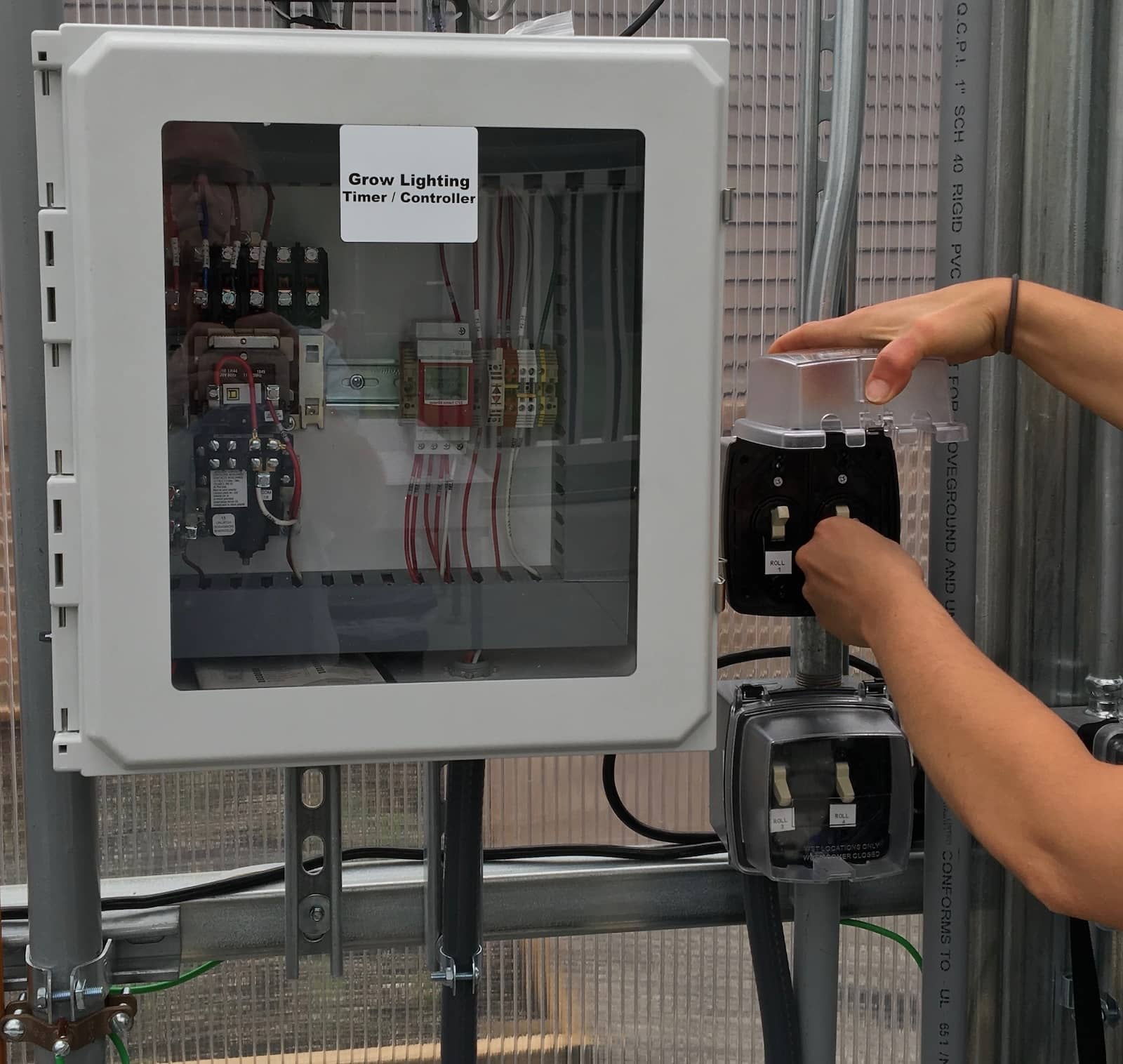
“Every utility has a different peak time period and every utility would have a different peak season,” Whited explains. “In the South, we are what’s called a winter peaking utility because… people are heating their houses with electricity, and that causes more electric demand in February than it does with people running their ACs in July.” However, in a place like Chicago where the heating is done mainly via a natural gas-powered grid, “peak electric consumption would happen in July or August.” By reducing energy usage (when possible) during these peak periods, CEA operators can reduce their energy costs and the strain on the grid.
Similarly, the shift to renewable energy sources can create daily power generation peaks and valleys. Being aware of these dynamics can also improve profitability on an everyday scale. “Typically, utility peak is between 4 and 7 p.m. Renewable energy is shifting that peak out to later into the day, sometimes between 6 and 9 p.m.,” Whited says. As the solar energy storage tapers (current battery technology generally only has up to a 4-hour capacity) and diurnal wind turbines haven’t ramped up yet, “there’s this gap around 8 or 9 o’clock where” growers may be paying a premium.
CEA growers may also elect to optimize for carbon footprinting by using what Whited calls “carbon triggers,” referring to how “dirty” the energy produced by the grid is. “In California, sometimes they’ll make people optimize for carbon reduction over price,” he says. “Some of the things that we’re learning through battery discharge programs is people will discharge their batteries [when] the price is the highest, but just because the price is the highest, isn’t exactly when the grid is the dirtiest.”
These are the types of programs utilities are considering, Whited continues. “They’re going to be more based around the use of electricity at certain times to really get growers to take advantage of what we call that flexible load.”
Some growers in North America already are implementing strategies to reduce their electric demand during peak load times. Neff cites as examples growers who use thermal energy storage ponds or tanks to release hot or cold energy (depending on the local climate) during high-price periods.
“We have this customer in the Maritimes who have this thermal energy storage that they store hot energy, and that allows them to have less boiler capacity because they can use the boiler during the day, shunt the heat the energy to store it, and then release that during the night,” Neff shares. “The boiler doesn’t have to be sized to heat everything all the time. That ability to spread the load out over time requires smart controls to be able to say ‘I know what’s coming here, I’m going to ramp this sooner.’”
Most CEA facilities Whited has encountered lack the funds and the engineering expertise to integrate these types of advanced building controls successfully. But a lot of the groundwork can be done early, especially submetering systems and building a robust and granular historical dataset to feed into these algorithms and AI systems. RII’s PowerScore platform is one way CEA growers can get a handle on their facility’s energy usage and collect validated, third-party data that can help facilitate conversations with utilities.
“No amount of energy conservation or load management should impact your business,” Whited says. “You should be making these decisions because it helps you improve the bottom line of your facility, and because it helps the grid. And when you help the grid, the grid should pay you.”


